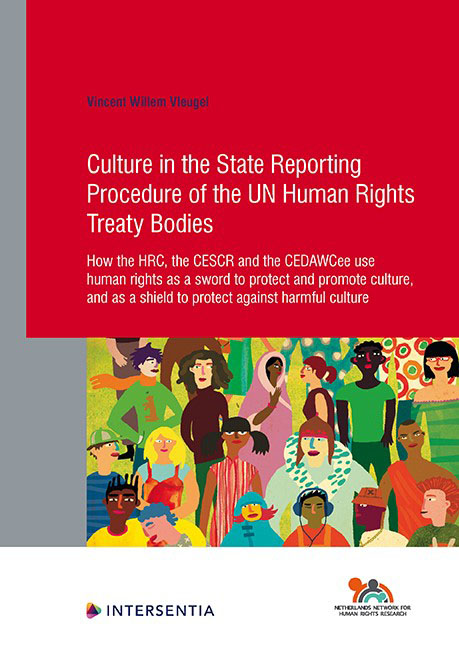 Culture in the State Reporting Procedure of the UN Human Rights Treaty Bodies
Culture in the State Reporting Procedure of the UN Human Rights Treaty Bodies Published online by Cambridge University Press: 11 November 2021
INTRODUCTION
Every year from mid-November until 5 December, Sinterklaas is celebrated in the Netherlands. He is a figure based on Saint Nicholas, patron saint of children. While there are many legends, very little is known about the historical Saint Nicholas. However, the Sinterklaas tradition has a long history. Apparently, it dates back to medieval times, but the ancient celebrations were very different from the ones existing in the present day. The present representation of Sinterklaas is believed to have its origin in a book published around 1850. The book introduces a narrative in which Sinterklaas comes from Spain and has a servant (‘knecht’). The servant is a black character named Zwarte Piet (‘Black Pete’). The tradition has been subject to much more change since then. As a case in point, Zwarte Piet used to be depicted as a devilish figure in charge of punishing naughty children. Nowadays, he is portrayed as witty, acrobatic, and smart.
Should a Dutch person be asked about something typically Dutch, Sinterklaas is likely to be mentioned, along with tulips, windmills, weed and cheese. It has become a family tradition, celebrated annually with the giving of gifts on St. Nicholas’ Eve (5 December). In 2015, it was included on the country's official cultural heritage list. However, the tradition has become controversial. The figure of Zwarte Piet is said to be ‘racist’ and a symbol of the days of slavery and colonialism. While some criticize and challenge the negative and stereotyping aspects of the tradition, others try to protect and safeguard what they believe to be an indispensable part of a Dutch cultural tradition.
In 2015, the Sinterklaas tradition was the subject of discussion before the Committee on the Elimination of Racial Discrimination (CERD), the expert body of the United Nations tasked with monitoring the implementation of the Convention on the Elimination of All Forms of Racial Discrimination (ICERD) by its States parties. When the CERD received a delegation from the Netherlands to ask questions and request additional information and clarification regarding the State party's efforts to implement the provisions of the Convention, some of the Committee members (independent experts) expressed concern about the Sinterklaas tradition.
To save this book to your Kindle, first ensure [email protected] is added to your Approved Personal Document E-mail List under your Personal Document Settings on the Manage Your Content and Devices page of your Amazon account. Then enter the ‘name’ part of your Kindle email address below. Find out more about saving to your Kindle.
Note you can select to save to either the @free.kindle.com or @kindle.com variations. ‘@free.kindle.com’ emails are free but can only be saved to your device when it is connected to wi-fi. ‘@kindle.com’ emails can be delivered even when you are not connected to wi-fi, but note that service fees apply.
Find out more about the Kindle Personal Document Service.
To save content items to your account, please confirm that you agree to abide by our usage policies. If this is the first time you use this feature, you will be asked to authorise Cambridge Core to connect with your account. Find out more about saving content to Dropbox.
To save content items to your account, please confirm that you agree to abide by our usage policies. If this is the first time you use this feature, you will be asked to authorise Cambridge Core to connect with your account. Find out more about saving content to Google Drive.